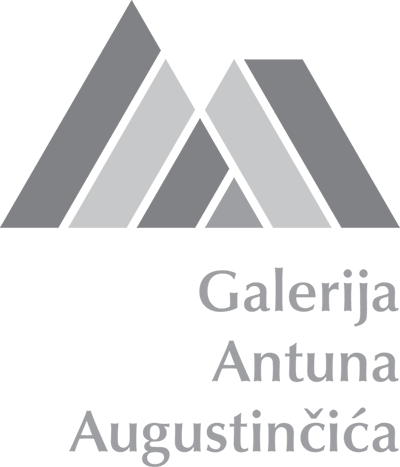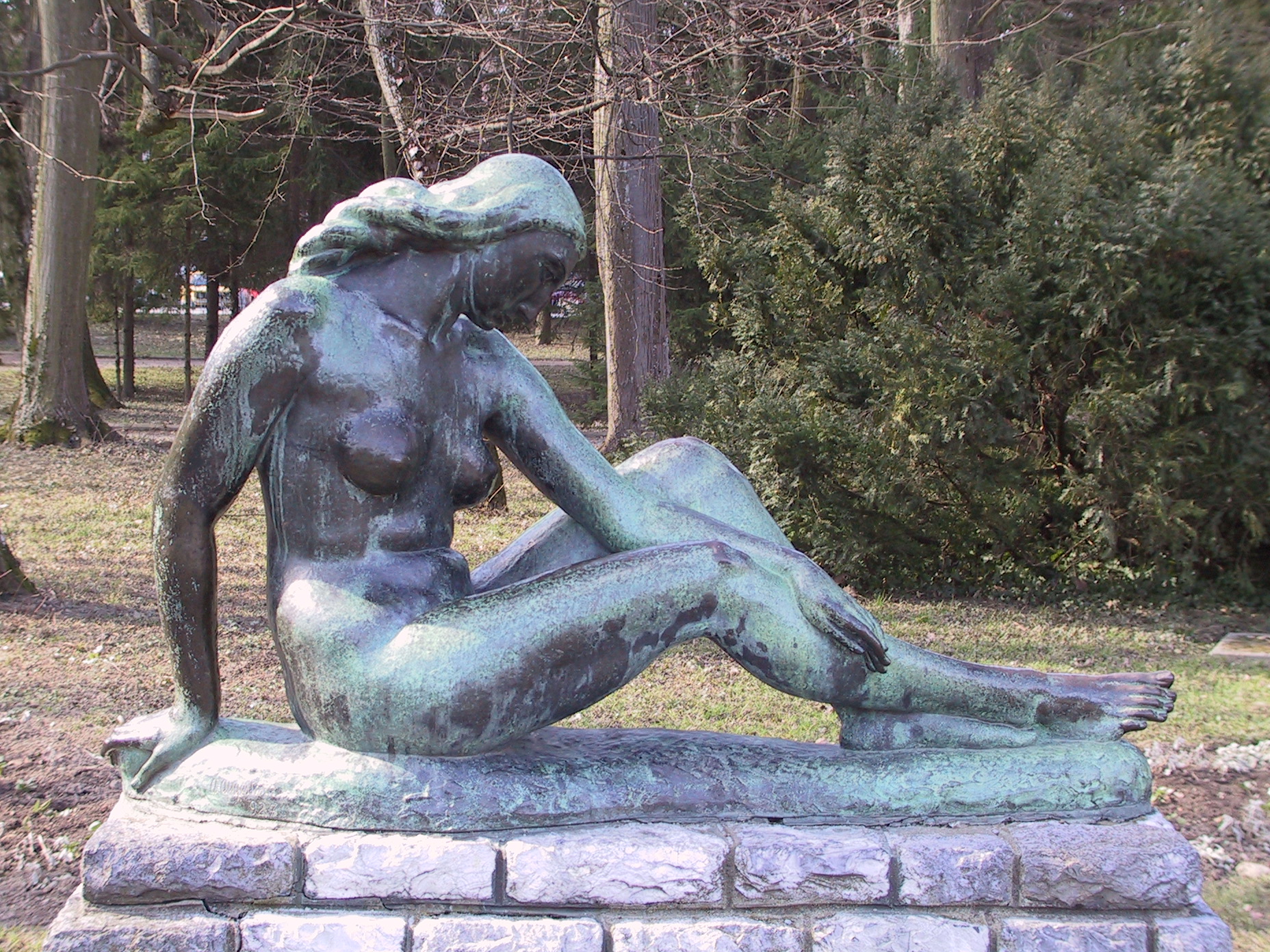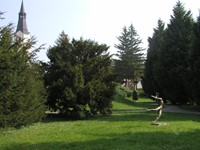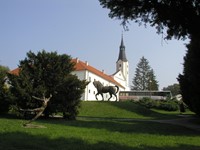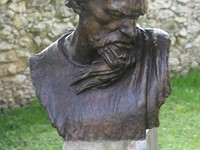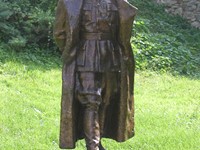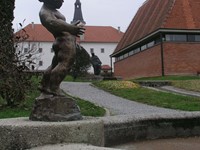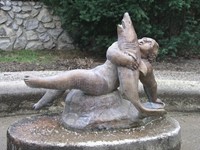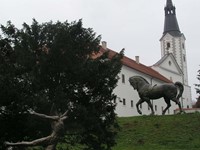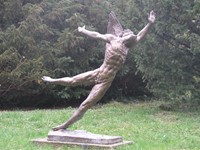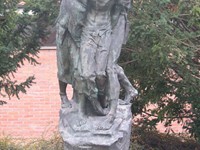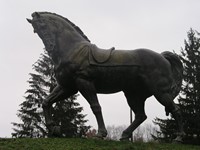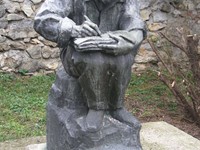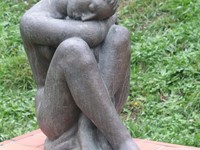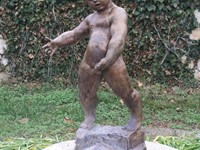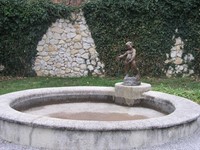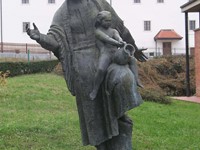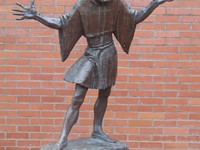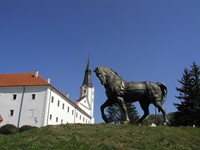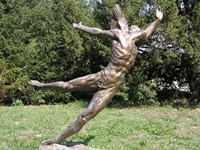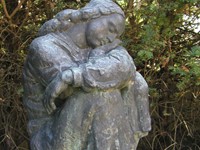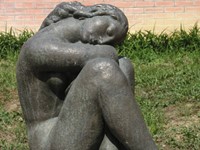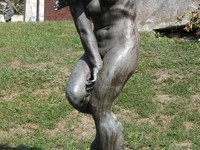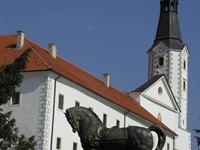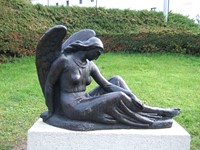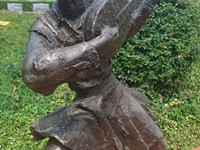The patio of the Gallery offers a quiet retreat and a stage for medium size events. Neatly incorporated into the patio is the figure of Marin Držić (1508–1567), the greatest Croatian comedy writer, shown by Augustinčić as a renaissance comedy actor.
As we descend into the park we approach sculptures created primarily as a refinement of their surroundings. The Bather embellishes the park of the Daruvar Spa, Mother with Child stands as a fountain in Glina, while Boy/Mannequin Pis and Boy with a Fish used to stand together as parts of a fountain in the park of the former Yugoslav Embassy in Rome. Augustinčić sculpted Eve/Shame in marble for the porch of Tito’s »White Villa« on the islands of Brijuni. The sculpture became known as the Brijuni Nude.
Augustinčić often used the lyrical motif of a sitting girl in a curled position for tombstones. The motif is presented here by the nude Sorrow and the dressed Sleeping Young Woman. The series of tombstones and monuments claiming this part of the park continues with the expressive bust of Moses, a fragment of the tombstone figure created for the Glück family but later placed as the Monument to Israelite Victims in the Mirogoj Cemetery in Zagreb. Icarus was made for the grave of the fallen aviator Adalbert Šoštarić-Pisačić, also in the Mirogoj Cemetery. In consistence with its motif, the sculpture shows technologically brave workmanship and a dynamic composition. In contrast to Icarus stands a densely enclosed volume of the monumental portrait of painter, politician and journalist Moša Pijade (1890–1957), shown sitting and writing with his head bent to his knees. The first cast of the Monument to Josip Broz Tito stands next to his birth-place in Kumrovec. This monument is one of the best and most widely used portraits of Josip Broz. The Horse in Motion, a part of a destroyed equestrian monument from Sombor, stands as a worthy example of Augustinčić’s rich monumental opus. Angel – shown as a young woman with wings – is a tombstone figure erected in 1933 on the tomb of the Crkvenec – Palčić – Matulay family in the Mirogoj Cemetery, where it still stands.
The last in the long series of variations of Carrying the Wounded stands in Šalata, in front of the Zagreb Medical School. The central figure is the Master’s self-portrait. It is not surprising, then, that he chose this particular sculpture for his own tombstone: underneath it rest the urns of Antun and Nada Augustinčić.
Our walk through the park ends at the Gallery entrance where, whether we arrive or take our leave, we see the figure of Petrica Kerempuh, which was first cast in 1973 as part of the Monument to the Peasants Revolt and Matija Gubec in Gornja Stubica.
(D. V.)

